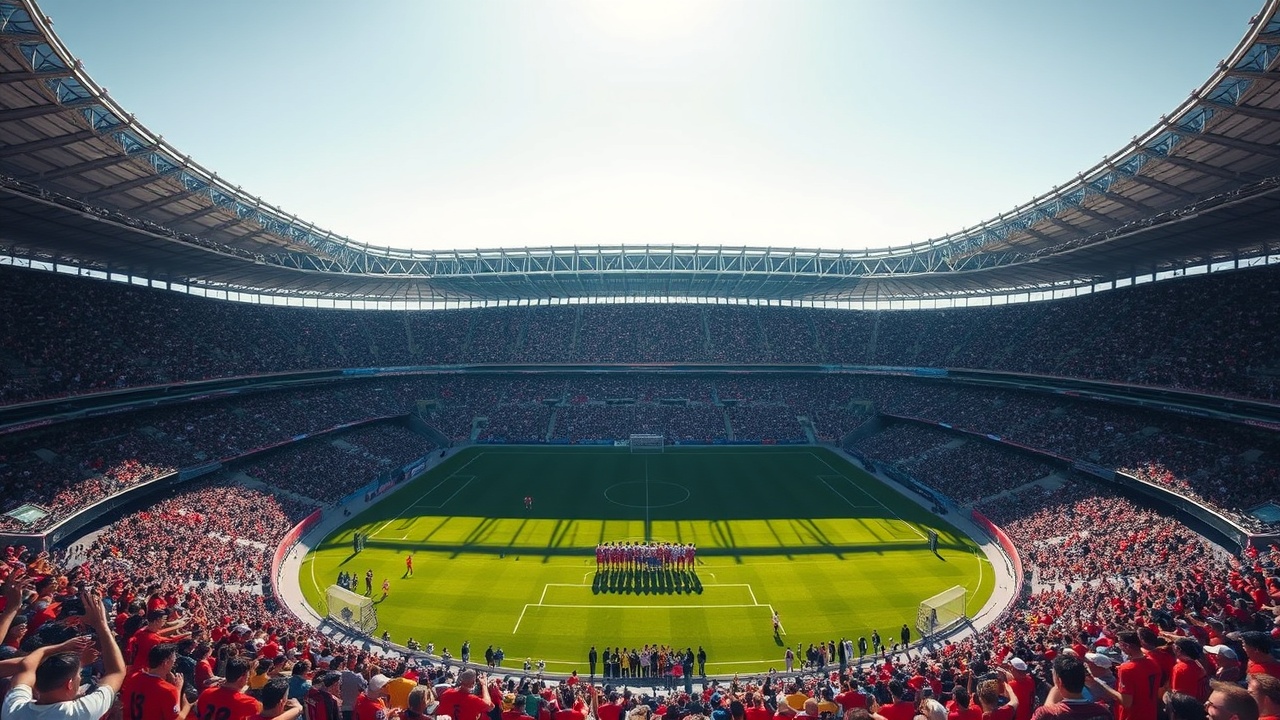Concerns Ahead of the 2026 FIFA Men’s World Cup
As the clock ticks down to the 2026 FIFA Men’s World Cup, which will see the U.S. team up with Mexico and Canada as hosts, concerns about the environmental conditions facing athletes are reaching critical levels. Given the heat and humidity experienced at the Club World Cup this summer, questions are emerging about the suitability of hosting such a significant sporting event during the peak of summer in North America.
Timing of the Tournament
Scheduled to take place from June 11 to July 19 next year, the 48-team tournament‘s timing has raised eyebrows, particularly as notable players, coaches, and climate specialists express alarm regarding the health implications of competing in sweltering temperatures. Unlike the 2022 World Cup in Qatar, which shifted to November and December to safeguard players and fans from extreme heat, the 2026 edition appears committed to its summer slot despite the potential for intense heat.
Player Safety Concerns
“This extreme heat situation must be prioritized over commercial interests regarding player safety.”
Alexander Bielefeld, the director of policy and strategic relations at FIFPRO, the global players’ union, emphasized the primary concern for player safety amidst rising temperatures. Such heated discussions are not new to the sport; during the 1994 World Cup in the U.S., a sweltering match between Mexico and Ireland became infamous for record-high temperatures exceeding 100 degrees Fahrenheit, forcing players to adapt in ways they would not accept today.
FIFPRO’s Recommendations
FIFPRO has been vocal in suggesting that prior to the 2026 tournament, FIFA should reconsider its scheduling strategy, particularly in cities known for extreme summer temperatures. The organization has flagged several venues, including Atlanta, Dallas, Houston, and Kansas City, as posing significant heat-related risks during the tournament. In fact, substantial concern persists over player exposure to conditions that could lead to potentially life-threatening situations like heat exhaustion and heatstroke.
Recent Match Conditions
During the recent Club World Cup, match conditions were deemed so severe that several fixtures—such as Paris Saint-Germain vs. Atletico Madrid—should have been postponed according to FIFPRO’s medical assessments which utilize a Wet Bulb Globe Temperature gauge. This method measures the risk of heat stress by considering various factors including humidity and sun exposure, leading to recommendations for kickoffs at safer times or even changes to venue assignments.
Adapting to Climate Challenges
Experts argue that suitable changes to match scheduling could make a significant difference, suggesting that fixtures avoid mid-day heat. Dr. Vincent Gouttebarge of FIFPRO remarked that existing protocols must evolve. He highlighted how even less intense midday match conditions can lead to adverse health effects, with players like Andreas Schjelderup noting their struggle to perform at tolerable levels in high heat.
Preparing for Unpredictable Weather
Security against extreme weather isn’t just about heat. The unpredictability of summer thunderstorms poses a regular threat to sporting events in the U.S. This summer, matches were frequently disrupted, emphasizing the need to prepare for multiple types of climate-related challenges during the World Cup.
Logistical Challenges Ahead
Given FIFA’s intent to pack 104 matches into an intense 39-day tournament while catering to global broadcasting demands, meeting health and safety standards will prove to be an immense logistical challenge. Specialists emphasize that players’ well-being cannot be compromised, advocating for sensible scheduling reforms.
Conclusion
In anticipation of these imminent challenges, discussions about evening games over the traditional daytime slots are increasingly crucial, as they would provide more favorable conditions for athletes. Despite projecting a summer tournament filled with excitement and competition, the upcoming World Cup might very well be defined by how effectively organizers address climate concerns to protect the well-being of all involved.
Without significant changes, the 2026 World Cup threatens to challenge players not just on the field but in their ability to withstand the elements themselves—a daunting prospect as preparations progress.




